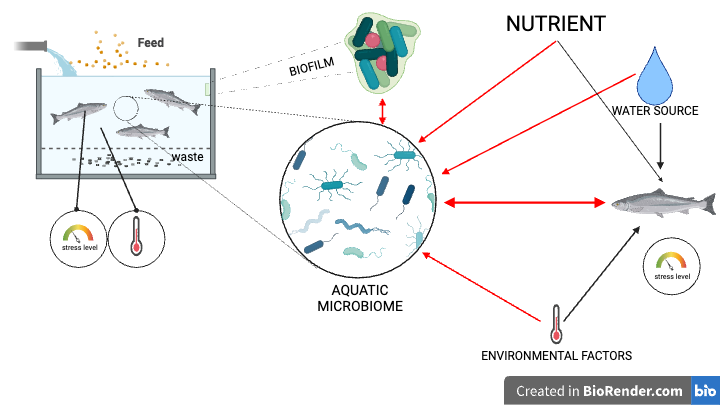Facts:
Funding
FORMAS Annual open call for Early Career Researchers, 2023
Funding period: 2024-2027
Participants
Fernando Puente-Sánchez
Nhat Ton Nguyen
Harmful bacteria have a negative impact in aquaculture operations, resulting in increased fish mortality and reduced yield. This project aims to understand the factors leading to their proliferation and develop a monitoring strategy together with commercial partners.
Recirculating aquaculture systems (RAS) are a promising development in land-based fish farming that reduces environmental impact by minimising water usage. However, the recirculation of water coupled to the high stocking densities mean that these systems are prone to the buildup of organic matter and the development of harmful bacterial blooms. Traditional pathogen control methods, such as disinfection or the use of antibiotics, are costly and can pose environmental risks, resulting in a less sustainable operation. Instead, monitoring the microbiome associated to aquaculture facilities can help us develop strategies to prevent disease and promote beneficial bacteria. However, our knowledge of microbial dynamics in aquaculture systems is still limited.
In this project, we will develop culture-independent indicators to classify RAS bacteria into different threat levels based on their genomic traits, and study how different types of organic matter affect the risk level of RAS operations. Coupled to machine learning and in situ portable sequencing techniques, this can develop into a routine monitoring tool to be adopted by aquaculture companies.
To achieve this, we will fulfill the following objectives:

The water microbiome as a biosensor in aquaculture. Illustration by Nhat Ton Nguyen.
Funding
FORMAS Annual open call for Early Career Researchers, 2023
Funding period: 2024-2027
Participants
Fernando Puente-Sánchez
Nhat Ton Nguyen